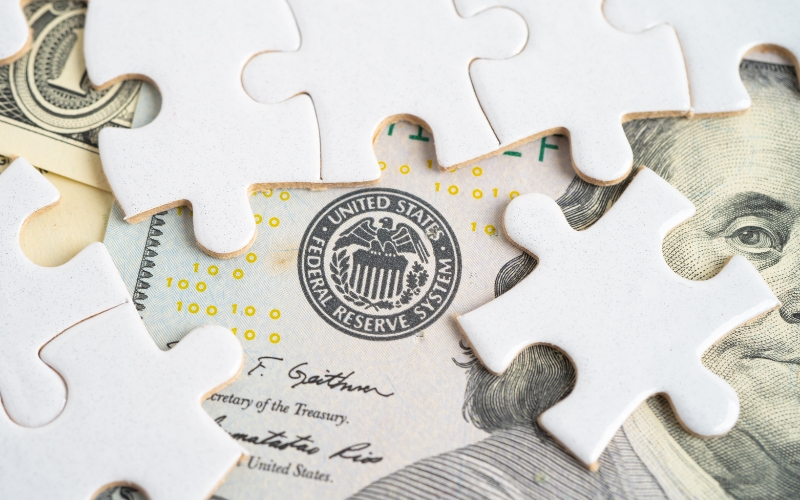The Federal Reserve raised interest rates by a 0.25 percentage point on August 7th, 2023 to further combat inflation, bringing borrowing costs to their highest level in over two decades. While inflation has cooled somewhat in recent months, it still remains well above the Fed’s 2% target rate. This latest rate hike ends a brief pause in rate increases that occurred last month, signaling the Fed’s intent to continue tightening monetary policy, albeit at a potentially slower pace.
The new federal funds rate range of 5.25-5.5% will gradually filter through the economy, impacting everything from mortgage rates and auto loans to credit cards and home equity lines of credit. Businesses will face higher lending costs, consumers will see the impact on adjustable rate debts, and savers may benefit slightly from higher deposit account yields. However, the broader goal is to dampen demand enough to align it with constrained supply, thereby taming inflationary pressures.
Taming Inflation Remains the Priority
The Consumer Price Index (CPI), the most widely followed inflation gauge, rose 3% in June 2023 compared to a year prior. This marked a notable cool-down from the scorching 9.1% pace of increase in June 2022, but still leaves inflation firmly above the Fed’s comfort zone. The central bank has aimed to soften demand through successive interest rate hikes in order to rebalance it with supply.
Fed Chair Jerome Powell stated in a news conference that the bank will continue to base decisions on incoming economic data, saying “We remain strongly committed to bringing inflation down to our 2 percent goal.” He noted they will factor in the cumulative impact of tighter monetary policy so far, lags in how rate hikes affect growth and prices, and evolving economic and financial developments.
Concerns Over Recession Risks
While focused on reducing inflation, the Fed also wants to avoid sparking an economic recession. Some analysts argue the pace of rate hikes so far in 2022 may be unnecessary, as prior increases have yet to fully transmit through the economy. With inflation appearing to peak, they contend it may be prudent for the Fed to pause and evaluate impacts before continuing to raise rates.
However, Powell asserted they do not believe a recession is likely at this point. Ongoing job gains, wage growth, and solid consumer spending, particularly on services, suggest the economy maintains momentum despite higher rates. The Fed seems intent on balancing inflation risks against growth risks, rather than jumping to cut rates at the first signs of economic weakness.
Key Signals to Watch
Several key indicators bear monitoring to gauge recession risks and inform the Fed’s policy response. Falling mortgage demand, waning small business confidence, and manufacturing contractions all hint at slowing activity. But the labor market and consumer spending remain relatively robust, suggesting the economy still has room to absorb higher rates.
If job losses accelerate, household consumption drops precipitously, or credit markets seize up, the Fed may need to adjust its strategy. But without such red flags, it appears inclined to stay the course for now. Powell emphasized they will respond meeting-by-meeting based on the latest data picture.
The Pace of Future Hikes Remains Uncertain
With inflation still elevated, further rate hikes this year seem likely. However, opinions vary on the magnitude and cadence amid conflicting economic crosscurrents. Another 0.5% hike could
occur, or the Fed may opt for a 0.25% bump if inflation continues to ease. Markets anticipate rates peaking around 3.5-3.75% in early 2023.
But the path remains highly uncertain. The Fed stressed patience in evaluating the impacts of prior tightening before adding more. If supply dynamics improve and demand moderates, hikes could pause sooner than some expect. Nonetheless, most economists foresee rates holding near peak levels through 2023 before cuts emerge in 2024 or beyond.
Navigating a Turbulent Economic Environment
For consumers and businesses, the current economic landscape requires care and preparation. Protect cash reserves, seek fixed rates where possible, and emphasize liquidity. Review budgets and shore up balance sheets in case income slows. Develop contingency plans amenable to different scenarios.
While the Fed pursues a soft landing, the road may get bumpier. Its inflation fight shows no signs of abating until substantial progress is made. Yet the resolve to avoid recession remains equally strong. Staying nimble and resilient is key, along with a prudent dose of patience.
Though the way forward remains clouded, the Fed’s overriding aim is to restore stability and steady growth over time. Maintaining flexibility and proactively managing risks are advisable in this transitional period. With preparation and perspective, the current economic cycle can be navigated smoothly.
Contact us today to discuss your real estate needs and how changing market conditions may impact your plans.




